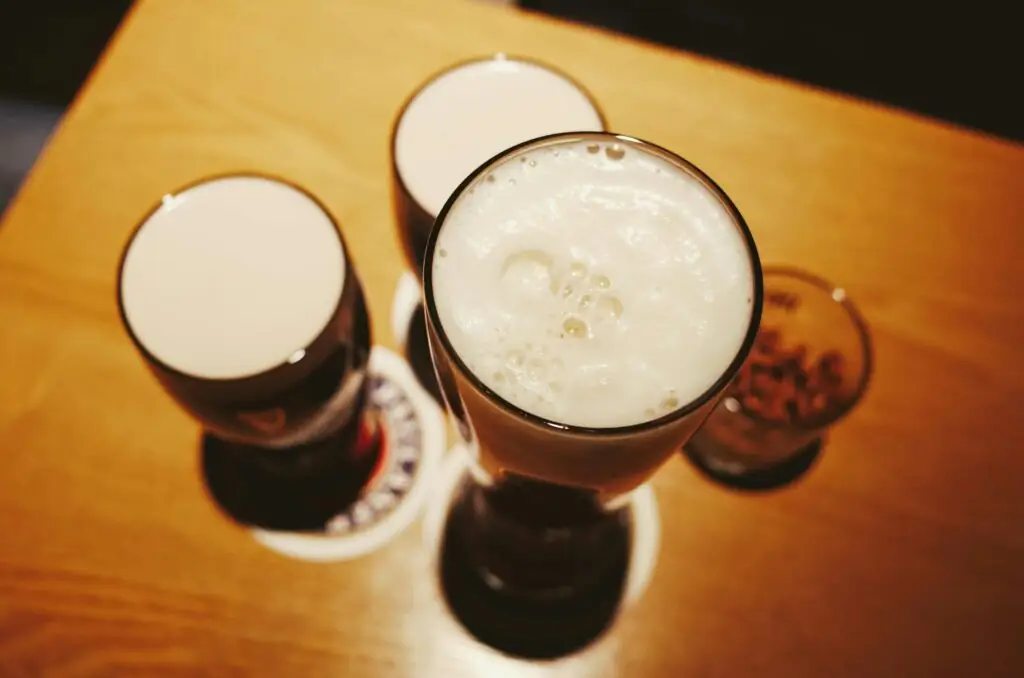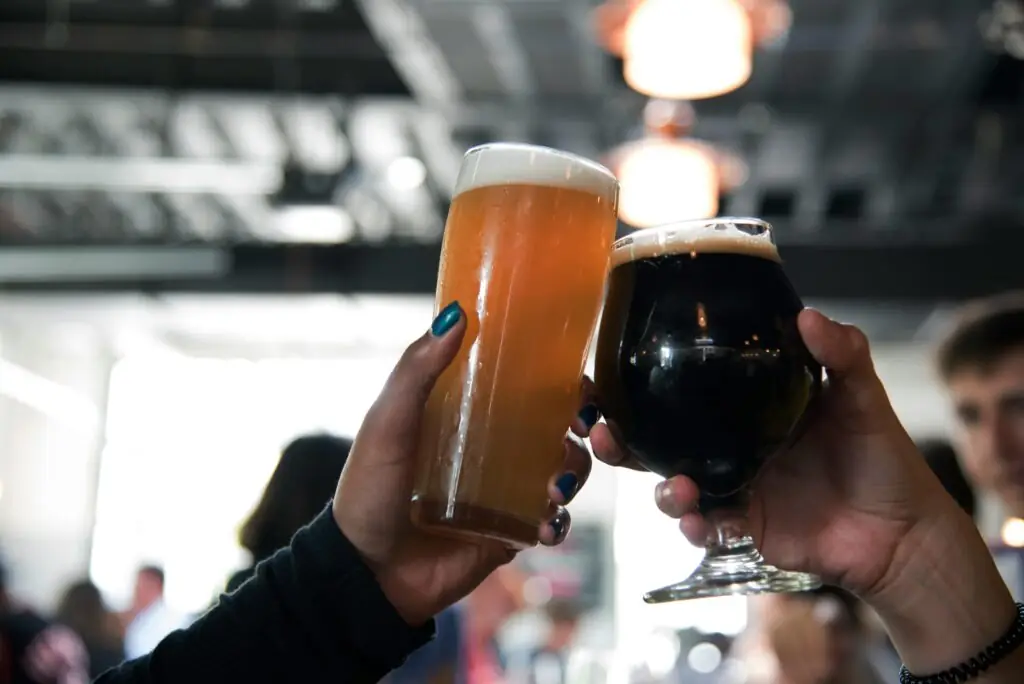Have you ever walked into a brewery and found that the menu of types of beer looked like a map of another planet? IPA, Stout, Pilsner, Amber Ale… What does all that mean? And which beer matches your style?
This guide is not for sommeliers, but for people who simply want to enjoy more of what they drink. Here you will discover the most popular styles of beer in a clear, entertaining way, with the information you really need to make a good choice.
The great division of the different types of beer: LAGER vs ALE
The different types of beer, or almost all of them, are grouped into two major families: Lager and Ale. The main difference lies in the type of fermentation, which directly affects the taste, aroma, and body of the drinks.
- Lager:
These are bottom-fermented beers, as their yeast works at cool temperatures, between 7 °C and 12 °C, settling at the bottom of the fermenter. Their flavours are usually milder, cleaner, and more refreshing.
If you want to learn how to recognise Lagers by their appearance, note that light tones predominate. However, there are also dark Lagers. Some popular examples are Pilsner, Helles, Dunkel.
- Ale:
Among the types of beer in Spain, Ales occupy an important place. They are top-fermented drinks, whose yeast works at warmer temperatures, between 15 °C and 24 °C, and remains on the surface.
Their flavour is more aromatic, with fruity, floral, or spicy notes. You can also recognise them by their colours, which range from amber to dark brown, depending on the style. Some examples are Pale Ale, IPA, Stout.
How many types of beer are there? The most popular beers
Now that you know the two main beer families, you’ll better understand the differences between the styles that follow.
Pilsner
Pilsner is currently the most popular beer within the Lager category. It is considered to originate from the Czech Republic and Germany. As for its distinguishing characteristics, keep the following in mind:
- Flavour: light, refreshing, with a touch of bitterness and a dry finish.
- ABV: medium-low (around 4%).
- Aroma: hops with soft and fresh notes.
- Colour: pale gold.
- Ideal pairing: salty tapas, fish, salads.
- Texture: fine bubbles and a light mouthfeel.
This style of beer can be found in well-known brands such as Pilsner Urquell and Stella Artois.
Amber Ale
This type of Ale beer is of English origin and has famous American adaptations. Its standout features include:
- Flavour: toasted with caramel notes. It is one of the most balanced types of beer in the toasted category, as it is not heavy.
- ABV: moderate intensity (medium-high).
- Colour: deep amber.
- Ideal pairing: grilled meats, burgers, and semi-cured cheeses.
- Texture: medium body and creamy head.
The most recognised brands that market this tasty brew are Newcastle Brown Ale and La Virgen Madrid Amber Ale.
Pale Ale
This is another type of Ale beer, with flavour, colour, and texture very similar to those of Amber Ale. However, there are some differences:
- Flavour: a little more hoppy than Amber Ale, with citrus and fruity aromas.
- ABV: moderate (medium-high).
- Colour: deep gold or amber.
- Ideal pairing: spicy dishes, pizza, and fried foods.
- Texture: light to medium, dry finish.
It is distributed by brands such as Sierra Nevada Pale Ale and Antares APA.
IPA (Indian Pale Ale)
This is a very notable style when talking about craft types of beer. It is an Ale, originally from England, but reinvented by craft breweries. Learn to recognise it by its:
- Flavour: intense in aroma and bitterness, with hops taking centre stage.
- Ideal pairing: spicy foods, curry, tacos.
- Texture: light to medium, with a lingering finish.
IPA comes in substyles such as NEIPA (New England IPA), which is hazier, juicier, and fruitier; and West Coast IPA (drier and more bitter, with resinous notes). Two of the most recognised brands where you can find them are Brewdog Punk IPA and Dougall’s IPA.
Stout
This Irish-English Ale is characterised by:
- Flavour: roasted, with hints of coffee, chocolate, or liquorice.
- Colour: opaque black.
- Ideal pairing: chocolate-based desserts or seafood.
- Texture: creamy and dense, with a compact head.
Guinness and O’Hara’s are the brands that offer it, allowing you to delight in its splendid flavour.
Hefeweizen / Witbier (wheat beer)
These are two types of beer Ale from Germany and Belgium, known as Wheat Beer. They are characterised by the abundant use of wheat in their production, which distinguishes them from other types of beer according to their brewing process.
- Flavour and aroma: notes of banana and clove, or citrus and spices.
- Colour: pale and cloudy gold.
- Ideal pairing: seafood, fresh salads, mild cheeses.
- Texture: light, refreshing, and slightly creamy.
Paulaner and Hoegaarden are two beer brands that allow you to enjoy these unique flavours.
Barleywine / Strong Ale
These two beers belong to the Ale category and are of English and Belgian origin, respectively. The following information will help you distinguish these styles from the others:
- Flavour: intense, with high alcohol content (8–12%), sweet malt, and fruity notes.
- Colour: dark amber to brown.
- ABV: between 7–11%.
- Ideal pairing: hearty desserts, stewed meats, strong cheeses.
- Texture: dense and warming.
The brands Delirium and La Chouffe have specialised in these flavours and offer Barleywine and Strong Ale of the highest quality.

How to know which types of beer to try?
If you’re wondering where to start or which beer to try at a specific time, follow this handy mini-guide:
- Lager/Pilsner: when you fancy something refreshing and for beginner palates.
- Amber Ale: go for this if you want to experience toasted, gentle flavours.
- IPA / Pale Ale: choose it if you’re in the mood for something bitter but with a fruity touch.
- Stout / Porter: if you love more coffee-like flavours, this one’s for you.
- Hefeweizen / Witbier: two alternatives if you want something cloudy yet light.
- Strong Ale: a strong flavour for experienced palates.
As you can see, there are options for beginners and others for more seasoned enthusiasts. Here’s a tip: if you’re not sure, order a half pint or share with friends. That way, you can try more styles without overwhelming yourself.
Cheers! And now, which types of beer will you try?
Next time you order a beer, you’ll do so with much more confidence! Now you’ll be able to fill the reusable plastic beer jars with all the types of beer we’ve talked about! There is no single “best beer”, only the one you most fancy at that moment.
Will your next be an aromatic IPA, a creamy Stout, or a refreshing Pilsner? You can surely now answer which is your favourite beer style and why. Choose wisely!

